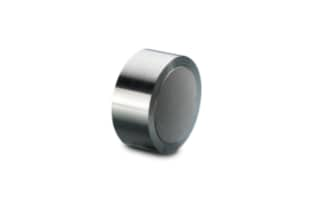
|
Chemistry |
Diol (OH) |
|
Separation Mode |
SuperCritical Fluid (SFC) |
|
Particle Substrate |
Hybrid |
|
Temperature Limits |
60 C |
|
Maximum Pressure |
6000 psi (415 Bar) |
|
Endcapped |
No |
|
Particle Shape |
Spherical |
|
Particle Size |
5 µm |
|
Pore Size |
130 Å |
|
Format |
Prep Guard Cartridge |
|
Surface Area |
185 |
|
System |
SFC Preparative |
|
Technique |
SFC, SFC/MS |
|
Inner Diameter |
30 mm |
|
Length |
10 mm |
|
UNSPSC |
41115711 |
|
Brand |
Torus |
|
Product Type |
Guards |
|
Units per Package |
1 pk |

Torus Diol (OH) Prep Guard Cartridge, 130Å, 5 µm, 30 mm X 10 mm, 1/pk
Torus column chemistries (Torus 2-PIC, Torus DIOL, Torus DEA, and Torus 1-AA) are available in analytical and preparative column configurations of 1.7 µm and 5 µm and have a broad range of selectivity. Torus 5 µm Preparative Guards can help you extend column lifetimes. The SFC-compatible Prep Guard Holder, 30 mm ID x 10 mm length, is necessary for this Torus preparative guard cartridge (Part No. 186006912).
Torus OBD Prep Columns are specifically made to make the most of the capabilities of the ACQUITY UPC2 System in order to provide quick, reliable achiral separations. Torus Columns' four brand-new, cutting-edge chemistries for convergence chromatography streamline the method's development. The absence or reduction of the requirement for additives, improved selectivity for a wide range of chemicals, and increased robustness are all benefits of excellent peak shape in these columns.
The construction of a method requires a set of columns with vastly diverse selectivities and great retentivity. The Torus Chemistries were carefully chosen to provide a wide variety of selectivities for acids, bases, and neutral analytes. Torus DIOL Columns were developed to provide consumers with greater selectivity possibilities. High-density diol surface bonding improves the whole approach's durability when paired with additives and offers chromatographic performance that is on par with that of traditional, unbonded silica phases.
You have the option of directly shopping for lab equipment from our website. You may also be interested in Torus Column Method Development Kit, 3 mm x 100 mm Columns (2-PIC, DEA, DIOL, 1-AA) 4/pk; The four brand-new, state-of-the-art 1.7 μm chemistries from Torus Columns simplify the method development process. These columns feature improved robustness, excellent peak form, and greater selectivity for a variety of compounds, which eliminates or minimizes the need for additives. The development of a final achiral analytical technique can be sped up by using the four Torus Columns in the Method Development Kits (2-PIC, DEA, DIOL, and 1-AA), each of which has a different selectivity.
What Causes My LC System To Constantly Shut Down?
In order to reinforce system security, protect columns and equipment, and ensure overall system safety, HPLC pumps and systems are equipped with an overpressure setting. If the system operates below the recommended setting or experiences excessive backpressure, the pump may cease functioning to safeguard the integrity of the LC system. Other potential factors contributing to such scenarios include the requirement for line cleaning or the removal of accumulated or crystallized debris that obstructs or hinders the system's functionality.